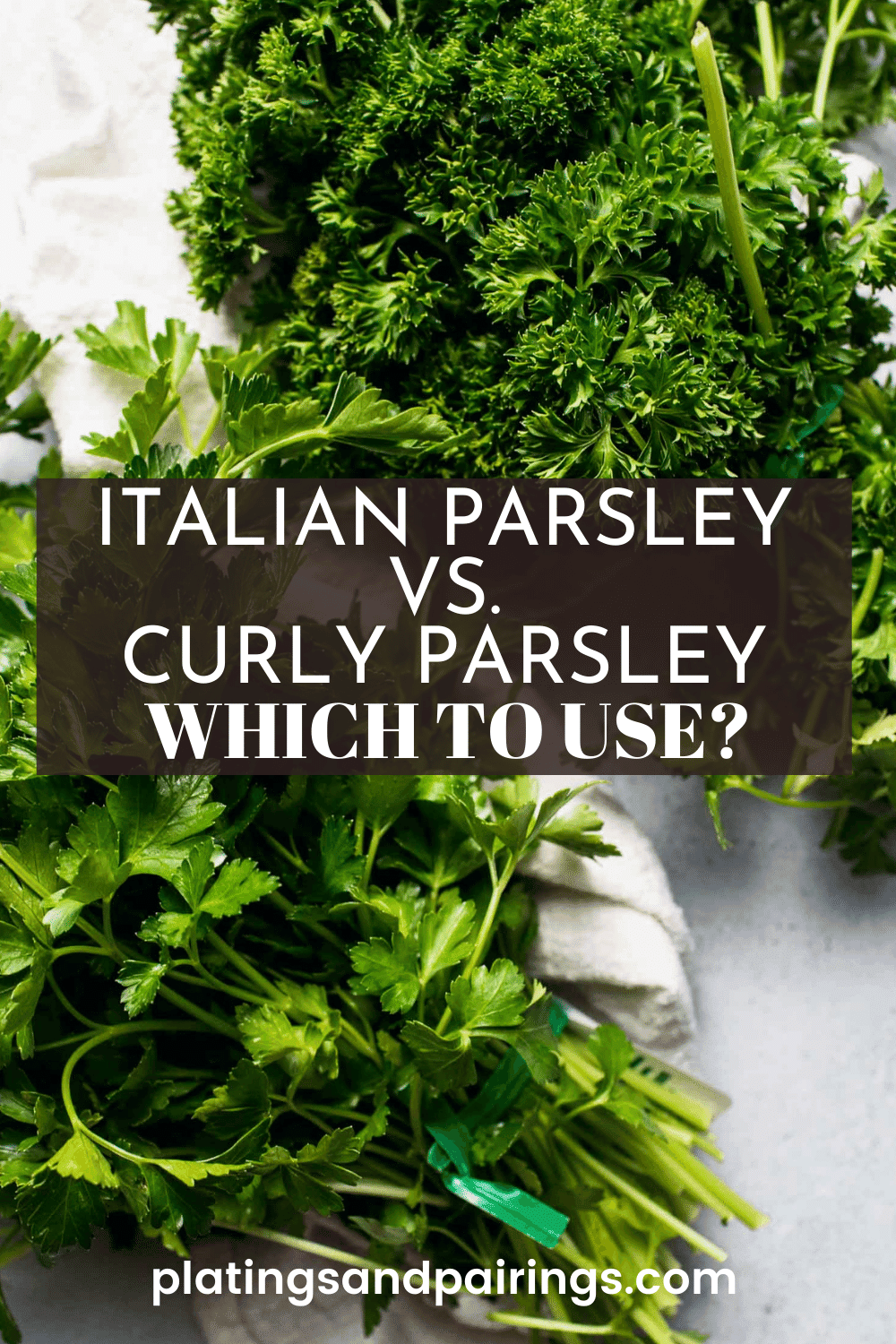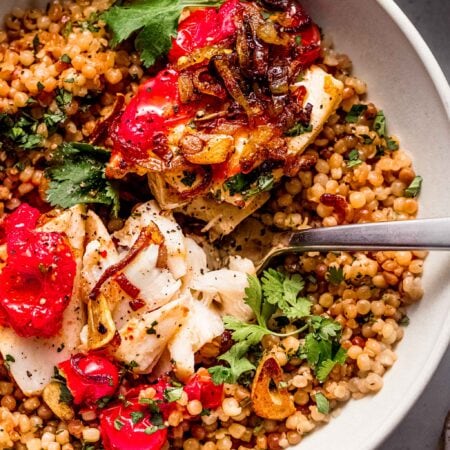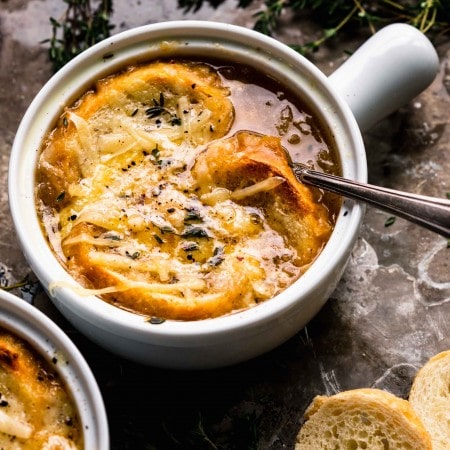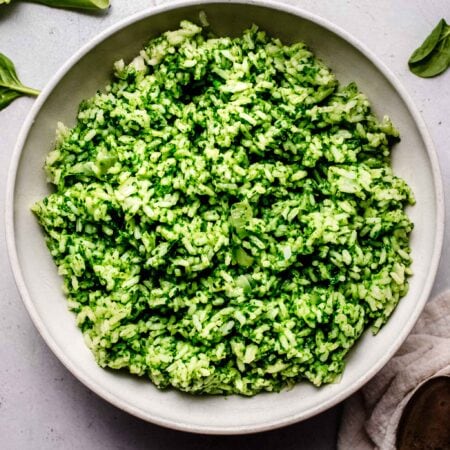Italian parsley and curly parsley are herbs with distinct characteristics. Here’s the differences, whether you’re using them as a garnish or as a flavor boost.

Want to Save This Recipe?
Enter your email & I'll send it to your inbox. Plus, get great new recipes from me every week!
By submitting this form, you consent to receive emails from Platings + Pairings.
Quick Answer: Italian parsley (also known as flat leaf parsley) has more flavor than curly parsley. It’s also easier to clean and mince. For that reason, I choose to use Italian parsley in my recipes. However, feel free to substitute either variety in your cooking.
Appearance and Texture
- Italian Parsley: Often referred to as flat leaf parsley, the Italian variety boasts broad, flat leaves with a rich green color. Its leaves are smoother and less densely packed than those of curly parsley, providing an elegant and vibrant aesthetic to dishes.
- Curly Parsley: As the name suggests, curly parsley features tightly curly leaves, creating a visually appealing and decorative look. The leaves are crisp and tightly curled, adding a unique texture to both the plate and the palate.


Flavor Profile
- Italian Parsley: Renowned for its robust and peppery flavor, Italian parsley takes the lead when it comes to imparting a bold taste to dishes. Its stronger flavor makes it a popular choice for adding depth to salads, sauces, and various Mediterranean and Middle Eastern recipes.
- Curly Parsley: While still flavorful, curly leaf parsley tends to have a milder taste compared to its Italian counterpart. Often used more for its visual appeal, it can add a subtle hint of freshness to dishes without overwhelming the overall flavor.
Culinary Uses
- Italian Parsley: A culinary workhorse, Italian parsley shines in a variety of dishes. From salads and soups to marinades and main courses, it adds a distinctive, herbaceous flavor that elevates the overall taste. It’s a key ingredient in classic Italian recipes like gremolata and chimichurri sauce.
- Curly Parsley: Primarily known for its ornamental use as a garnish, curly parsley can still contribute to the flavor profile of salads (like tabbouleh), but it’s often chosen for its aesthetic appeal rather than its taste, since it has a milder flavor. It’s a favorite for finishing touches on platters and as a decorative element in various culinary creations.

Storage Tips
- Italian Parsley: Flat leaf parsley has a longer shelf life and retains its freshness better. Store it similarly in the refrigerator, but it can last a bit longer before showing signs of wilting.
- Curly Parsley: With its crisp texture, curly parsley tends to wilt more quickly. Store it in the refrigerator, wrapped in a damp paper towel or in a plastic bag, to maintain its freshness.
Nutritional Value
Both curly and flat leaf parsley are rich in vitamins A and C, as well as iron and antioxidants. However, flat leaf parsley tends to have a slightly higher concentration of essential oils, contributing to its more robust flavor.

FAQs
Yes! However, curly parsley simply doesn’t pack the same punch as Italian parsley, potentially leaving your dish under-seasoned. Consider using a bit more curly parsley if that is what you have on hand.
Italian parsley has more flavor than curly parsley. It’s also easier to clean and mince. For that reason, I prefer to use Italian parsley when I’m cooking.
Recipes that Use Parsley

Italian Parley vs. Curley Parsley: The Differences
Ingredients
- ¾ cup parsley
- 1 teaspoon lemon zest (from 2 lemons)
- 3 cloves garlic
- Kosher salt (to taste)
Instructions
By Hand:
- Finely chop the parsley, zest the lemon, and mince the garlic. Combine all three in a small bowl and season with a pinch of kosher salt.
Food Processor:
- Place herbs, whole garlic cloves, and lemon zest in the food processor and pulse until everything is finely chopped and combined. Season with a pinch of kosher salt.
Notes
- It’s best to serve this gremolata right away. However, if you add olive oil, it will last much longer. Pour the liquid into an airtight container and keep it in the fridge for up to 1 week.









